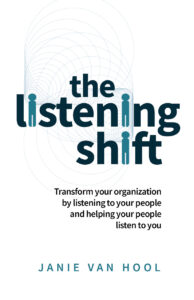Women at work – have you ever felt unheard? Healthista spoke to author Janie Van Hool who has some tips on how to make yourself heard in the workplace
In this exciting era of change, the call to raise women’s voices at work is persistent, insistent, and growing.
Women persistently lag their male peers in recognition, reputation, pay and promotion opportunities. Women are interrupted twice as much as men. Plus, men make up 75 per cent of the speaking time in decision-making groups.
The intention is clear – we are invited to pioneer change. But this rallying call doesn’t make change happen on its own.
Women are interrupted twice as much as men
Changing things requires acts of dedication and commitment, beginning with personal challenge, addressing our own biases and building to develop the confidence to challenge others.
Women need to be heard. It’s down to us, individually, so where we start is personal, but where we can make a difference is universal.
Raising our voices involves three things:
- Firstly, noticing what we say;
- Secondly noticing how we say it;
- Finally, noticing what we do to support other women.
Janie Van Hool, author of The Listening Shift, revealed her top tips on helping to raise women’s voices at work…
Women at work: what we say…
Language matters – and much of it in organisations is just habit. Pay attention to the adjectives you use to describe yourself and those used to describe a woman at work.
Notice the language you hear spoken by others and draw attention to any that has a negative impact on women.
Only when we open our ears to the subtleties and impact that language has are we be able to influence changing it. It’s a key starting point to raising our voices with confidence.

Women at work: how we say it…
We must take voice seriously, people judge us on how we sound and whilst this may seem unfair, it remains the way of things as we seek gender equity in the workplace.
Pace, pitch, and volume play a significant part in enabling women to be heard.
Of course, you don’t have to change your voice, but you might choose to view paying attention to it as an important contribution to managing your impact.
Pace
Pace plays a key part in conveying presence, confidence, and certainty. When we rush, we make it difficult for others to listen, and so they switch off.
As a technique, developing the confidence to pause allows space for others to reflect and listen, and communicates calm, clarity, and control.
It’s worth practising to make sure this feels natural for you.
Pitch
Pitch is a fascinating area, criticism is often levelled at women for speaking with a rise in tone at the end of a sentence – as if they are asking a question?
In fact, in conversation with other women, this is a vocal strategy employed to include and engage others successfully, but we need to notice if we do this as a habit and adapt accordingly. Raising our voices whilst sounding uncertain will lead to our ideas being dismissed.
Consider your audience and try to listen to yourself as you speak, finishing your sentences by resolving the pitch down will help to create conviction and certainty.
Volume
Finally, volume. Audibility correlates with credibility, so if we can’t be heard, we will be dismissed as lacking substance. In a noisy meeting or debate, trying to ‘break in’ requires a handy toolkit.
I certainly recommend using someone’s name to draw attention to your voice or co-operatively interrupting. Try saying ‘I agree! And let me add…’ to make sure that you get your voice into the conversation.
Recording yourself on your phone for the purposes of analysis is the best practice strategy. Painful as this can be, you will hear what other people hear when you speak. Then you can make any necessary changes.

Women at work: what you do…
Leading researchers in the field of differences in gender communication alert us to one key difference – women bond by sharing vulnerabilities, whilst men tend to focus on raising their status with others.
This doesn’t mean that in raising your voice at work you shouldn’t share how you’re feeling, or be authentic, but it might mean making slight adjustments.
Try adding confident or assertive statements after expressing self-doubt to build confidence in your listeners. For example, ‘I was feeling nervous about presenting today, I wasn’t sure I could do it. But I had some feedback, prepared really well and I think it made a big difference to how I performed.’
Women bond by sharing vulnerabilities, whilst men tend to focus on raising their status with others
Notice who you listen to, you may be surprised to find that you are naturally drawn to men’s voices in preference to women’s.
There’s a stack of research offering all sorts of reasons why this often happens, but to help us redress the balance, start intentionally listening to women in your business and repeat what you hear them share.
Champion your women at work – amplify their views and ideas. If you see women in your business interrupted or ignored, intentionally bring them into the conversation and draw attention to the behaviour that silenced them, if you feel able to. Ask your male colleagues and allies to do the same.
Champion your women at work – amplify their views and ideas
View yourself as a pioneer, a change-maker and role model for raising women’s voices in your workplace.
As psychologist William James wrote, ‘Act as if what you do makes a difference – it does’.

Janie Van Hool is a leadership communication expert and the author of The Listening Shift: Transform your organisation by listening to your people and helping your people listen to you – available to buy on Amazon.
More Healthista Content
6 surprising health benefits of a healthy gut microbiome
A nutritionist’s guide to reducing anxiety
Want better sex? It’s time to go vegan
Medical Doctor reveals 5 daily habits that could be harming your mental health
